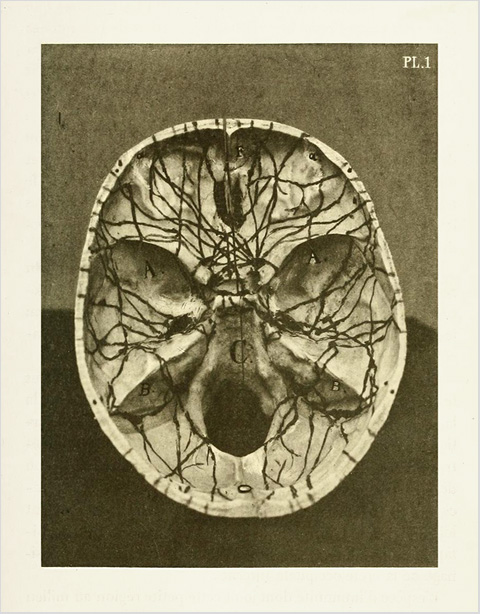
Paris : Adrien Delahaye, 1873.
Description : bt, tp, [1]-167 p., [13 l.] pl. ; ill.: 22 phots., 12 engrs., tbls. ; 24 cm.
Photograph : 22 phototypes (9 leaves with 2 images & 4 single image leaves).
Photographer : Charles Bilordeaux, fils.
Subject : Cranium — Trauma ; fractures.
Notes :
Ce travail est accompagné de 11 [sic] planches obtenues d'après un procédé dont l’application à l’anatomie pathologique est entièrement nouvelle! c’est la phototypie. MM. Lemercier et Cie, qui ont rendu à la science de grands services par les belles productions sorties de leurs presses, se sont prêtés avec le plus grand empressement aux essais qu’il a fallu faire avant d’arriver à reproduire des fractures avec l'exactitude de la photographie et les avantages indiscutables des épreuves tirées à l’encre grasse. Nous tenons à les remercier publiquement de leur dévouement, ainsi que M. Ch. Bilordeaux, pour avoir mis à notre disposition leur infatigable patience et leur remarquable talent d’artistes. M. Bilordeaux nous était déjà connu pour avoir travaillé avec son père au grand ouvrage sur les Espèces antédiluviennes, que M. Belgrand a publié en 1869 par ordre de la ville de Paris.—Pages 6-7.

In contemporaneous descriptions of Félizet, he is a painted "Petit Soldat" from a Lucotte box, with flashing blue eyes, an iron oxide complexion, and a military comportment bolstered by the steel rapier buckled to his trousers. He fought in the Franco-Prussian war, and by altering his name, he was able to re-enlist in the army of the Loire under Bourbaki, when he was wounded in the head by a rifle ball—becoming the inspiration for his doctoral thesis. Félizet turned his love for honor and l'escrime into a book titled, "Traité de l'Épée," and recommended fencing to his diabetic patients. When Bourneville's push to laicize the hospitals (1878) started gaining serious traction, Félizet challenged him to a duel. Fortunately, he was convinced by Bourneville's friends to desist in the bladed folly. In spite of these idiosyncrasies, Félizet was a brilliant surgeon and renown for his contributions to pediatric hernia. This monograph on cranial fractures, with its wonderful phototypes of skulls, was also influential and won the highest honors for a doctoral thesis.
The photographs are by Charles Bilordeaux, whose career was eclipsed by that of his father, the pioneer photographer Charles-Hippolyte-Adolphe Bilordeaux (1807-1872), student of Le Gray, and one of the founders of Société de Photographie in 1854. His natures mortes are highly prized by collectors of early historical photographs.
